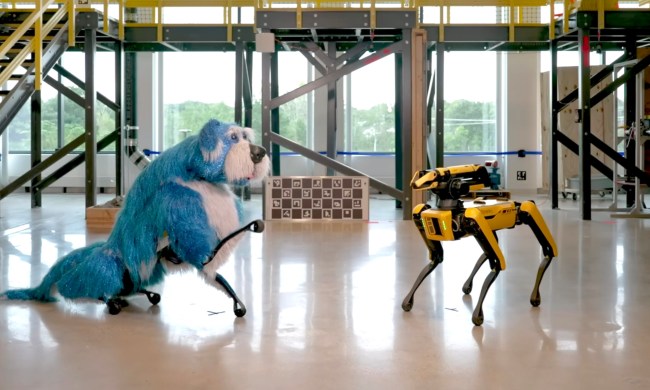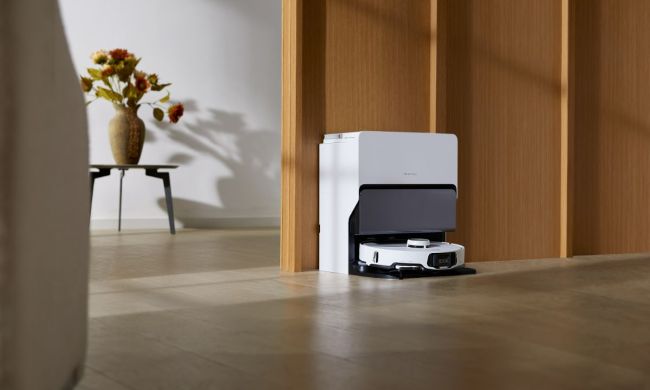To assemble the Bratwurst Bot the team used a standard robotic arm from Universal Robots, a two-finger gripper from Schunk, and regular grill tongs. The robotic assembly was controlled by a Robot Operating System (ROS) web frontend that displayed on a consumer tablet. A second tablet displayed the robot’s “face,” topped by a chef’s hat.
Two RGB visualization cameras were used to help the Brat Bot know where to place and how to keep track of the sausages, which were cooked to order. The cameras were also used to tell when it was time to flip the little darlings so they’d be cooked but not burned.
Guests entered their orders on the tablet giving their names, how many sausages they wanted, and how they wanted them cooked. When the robot determined the sausages were done, it picked them up, placed them on a plate, and displayed the guest’s name, often vocalizing an appropriately witty remark such as “heiss und fettig,” which translates to “hot and greasy.” The robot’s face also wiggled its mustache when putting the sausages on the plates.
The Bratwurst Bot was assembled and used to demonstrate the level of development of service robotics at FZI. More than 200 bratwurst were grilled and served autonomously by the device. Robots such as the Bratwurst Bot may or may not be showing up soon in restaurants, but it’s reassuring, as reported by Quartz, that this one was able to complete its tasks without burning or killing anyone.
As the Bratwurst Bot says, “Lass es dir schmecken!” (“Enjoy your meal!”)



